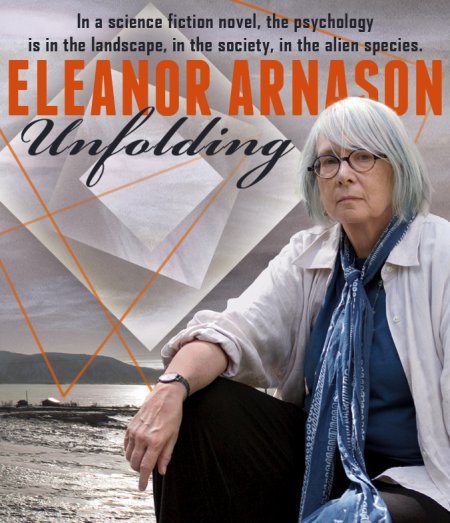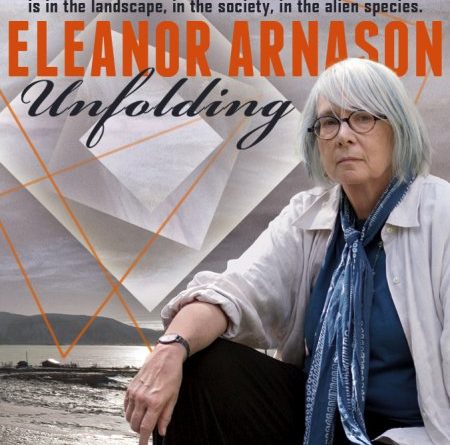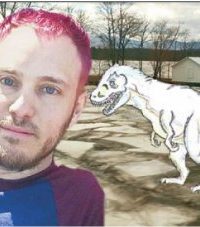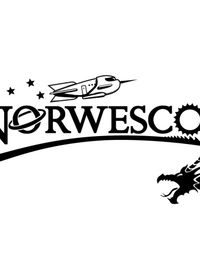Eleanor Arnason: Unfolding

Eleanor Atwood Arnason was born December 28, 1942 in New York City, and during her childhood spent time in New York, Washington, Chicago, London, Paris, Afghanistan, and Minneapolis. She studied art history and English literature at Swarthmore (graduating in 1964) and did graduate work at the University of Minnesota until 1967, eventually settling in Detroit for several years before returning to Minneapolis/Saint Paul, where she has lived since. She has worked variously in offices, warehouses, a museum, and non-profits; she retired in 2009.
Her debut story ‘‘A Clear Day in the Motor City’’ appeared in 1973. Notable short fiction includes Nebula Award finalists ‘‘The Warlord of Saturn’s Moons’’ (1975), ‘‘The Dog’s Story’’ (1996), ‘‘Stellar Harvest’’ (1999), ‘‘Knapsack Poems’’ (2002), and the Potter of Bones’’ (2002); Hugo Award finalist ‘‘Stellar Harvest’’ (1999); and Sturgeon Memorial Award finalists ‘‘Dapple: A Hwarhath Historical Romance’’ (1999) and ‘‘Mammoths of the Great Plains’’ (2010). First novel Sword Smith appeared in 1978. That novel was followed by To the Resurrection Station (1986); Daughter of the Bear King (1987); A Woman of the Iron People (1991), winner of a Mythopoeic Award and the inaugural James Tiptree, Jr. Memorial Award; and Ring of Swords (1993). Since Ring of Swords, Arnason has focused on short fiction, much of which is collected in Ordinary People (2005), Mammoths of the Great Plains (2010), Big Mama Stories (2013), Hidden Folk (2015), and Hwarhath Stories (2016). Her interest ranges from SF to fantasy and points beyond; she once wrote an opera about the invention of double-entry bookkeeping.
Excerpts from the interview:
‘‘We have a split in the 20th century between genre fiction, which tends to be about action, and fiction that’s about interpersonal relationships and psychology. At a Chicago convention decades ago, Gene Wolfe said that every time he encounters people who say the most important things happen within their heads, he wants to put them in a small boat on the ocean in the middle of the storm. This connects to my prejudices about mainstream literary fiction.
‘‘I’ve always read science fiction and fantasy and murder mysteries. I was an English major most of the way through college, and I read The Great Gatsby and Dubliners and Portrait of the Artist as a Young Man and some of Proust in French, so I got a reasonable background in mainstream literature. But it didn’t interest me the way that science fiction did. My problem with realism is that a realistic novel about the psychological problems of middle-class people is a story which is very similar to the life I’m leading, and thus is not too interesting. Whereas the minute you throw in a dragon or global warming, it becomes very interesting. Internal thoughts become much less important, and you basically want to deal with the dragon.”
…
‘‘My father’s parents came from Iceland to North America, and I grew up in a house full of books on Norse mythology, the Icelandic sagas, and the novels of the great 20th-century Icelandic writer Halldór Laxness. (I have a copy of his novel Independent People inscribed to my father. Laxness misspelled my father’s name.) I have a thing about Iceland, especially the medieval literature, and I have come to love Icelandic folklore. Hidden Folk, which came out early in 2015, is a collection of stories based on Icelandic folklore and literature.
‘‘Icelanders don’t have princes and princesses – Iceland was too poor for royalty, even in folktales. Instead, there are trolls, elves, ghosts, outlaws, and ministers who study the black arts. Hidden Folk is very much my own version of Icelandic tales. My elves are unpleasant upper-class types. My trolls are poor farmers and workers, barely surviving. My humans are a mixed lot: farmers and farmwives, students of the magical arts, slaves, a writer, a cop. Over the years, I wrote five Icelandic fantasies – six since the collection was published, and I’m working on a seventh.”
…
‘‘Science fiction and fantasy have the appeal of strangeness, and of course science and technology are enormously important in science fiction. SF has been dealing with global warming consistently, while the presidential candidates have barely mentioned it. There’s no question that it’s happening, and it’s going to be devastating. James Lovelock, who came up with the Gaia theory, has said we’re going to be down to a billion people by the end of the century.
‘‘I read a lot projections of the future, and people never factor in enough. They project a population of nine billion, but they don’t factor in the Four Horsemen of the Apocalypse – famine, war, disease, and death due to climate change. All they’re doing is a projection of where we’ve been. Science fiction, when it’s good, will pick up a whole bunch of these ideas at once. There was a panel at the 2016 Minicon about writing SF in which many things are changing, rather than just one. One of the things that makes me crazy about much hard SF is, you’re in the future with unbelievable physics that nobody now can understand… but everybody has names like Brad and Charles and they’re living the way we live now. That is nuts. Charles Stross’s early novels had more things happening than I could keep track of. They were stunning.”
…
‘‘Writing Ring of Swords was a lot of fun – it’s the fastest I’ve ever written a novel, and the first separate hwarhath story, ‘The Hound of Merin’, was also written at about the same time as the novel. Ring of Swords was going to be the first of a trilogy, and I wrote the second volume, but it was turned down by the publisher. It’s really hard to sell the middle book of a trilogy by itself, so I put it to the side. There were problems with the sequel, and I’m not happy with the way it turned out. (I now have a contract with Aqueduct Press for a revised version of the sequel, so it will finally come out.) I was frustrated with the trilogy, and I had a lot more information about the hwarhath, so I started writing short stories. These turned out to be stories written by hwarhath authors after they encountered humanity, not only about the hwarhath, but about them thinking about their own culture, and in some cases thinking about humanity. The hwarhath are extremely rigid in many ways, and meeting a species very much like themselves but with different rules for male and female behavior leads the brighter among them to question what is the nature of men and women, and that underlies a lot of the stories.”
…
‘‘I have an alien species I’ve written a few stories about, the Goxhat, which are another attempt to look at social stereotypes or maybe ideas of self. In the early part of their culture there were teams, which would be a bunch of Goxhat hatched out of the same clutch of eggs. Each team thought of itself as ‘I,’ and no individual thought of itself as an individual. They come in four sexes, and a team could be all four sexes or one sex, and it’s all ‘I.’ My story ‘Knapsack Poems’ is about the Goxhat early in their history. As their culture evolved, their sense of ‘I’ got bigger, until the whole species became ‘I.’ They know that they are different bodies, but they don’t have a clear sense of themselves as individuals. They’re spacefaring, and they meet other species that don’t have their sense of oneness, so the problem becomes how the Goxhat can think about other species. They meet something that isn’t part of the ‘I’ – and what do they do about a species that is millions of ‘I’s?”
Read the complete interview in the September 2016 issue of Locus Magazine. Interview design by Francesca Myman.







